
Consider the diagram showing aClaim Assessmentand aClaim Settlementtogether with a relationship between them labeled"decision."
What type of relationship is “decision”?
Consider the diagram:
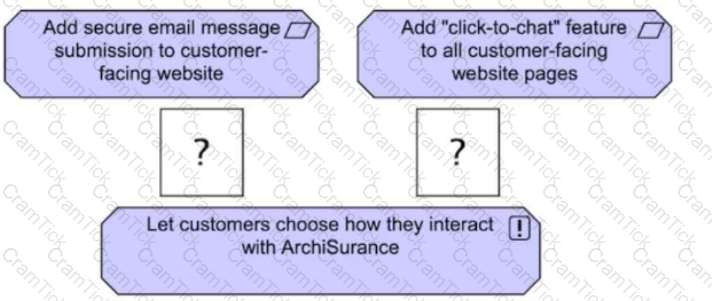
(A diagram showing"Add secure email message submission to customer-facing website"and"Add 'click-to-chat' feature to all customer-facing website pages"at the top, both connected to"Let customers choose how they interact with ArchiSurance"at the bottom with a missing relationship type.)
Which of the following is the correct relationship between the bottom element and the top elements?
Consider the following symbol, which represents information about a transformation project at ArchiSurance involving systems and business processes:

Which of the following statements correctly expresses the meaning of the symbol?
Consider the fragment of the conceptual model of anArchitecture DescriptionfromISO/IEC 42010:
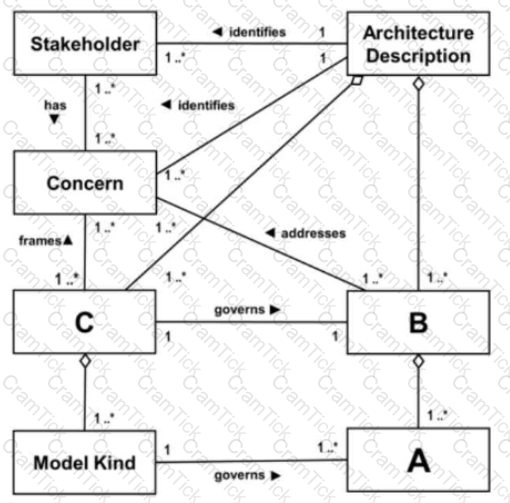
(A diagram showing relationships betweenStakeholder, Concern, Architecture Description, Model Kind, and elements A & B.)
Which answer correctly identifiesAandB?
Consider the following symbol, which represents information about a transformation project at ArchiSurance_
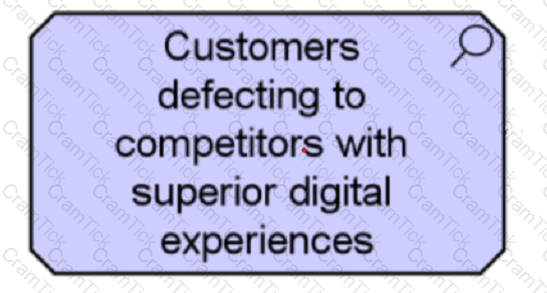
Which statement correctly expresses the meaning of this symbol?
In the Application Layer metamodel, what is the relationship type from an application service to a data object?
What application layer element would you use to define a point of access where an application service is made available to a user?
Consider the diagram showing a system used forsettling car insurance claims:

(A diagram showingOnline Claimsconnected toLoss Claim, which in turn accessesCustomer Record.)
Which answer correctly describes this diagram?
Complete the sentence. In the Technology Layer metamodel, a communication network
a path_
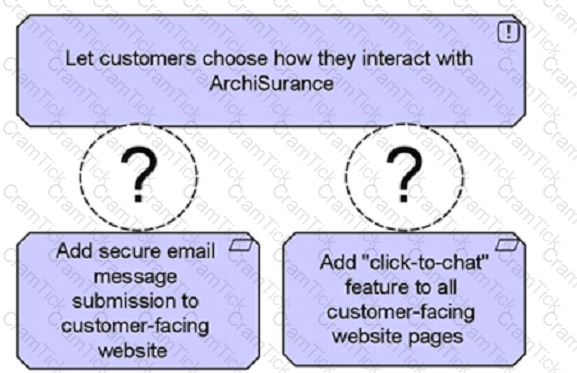
Which of the following is the correct relationship between the bottom elements and the top element?
Consider the following diagram which shows part of the ArchiSurance Claims Administration:
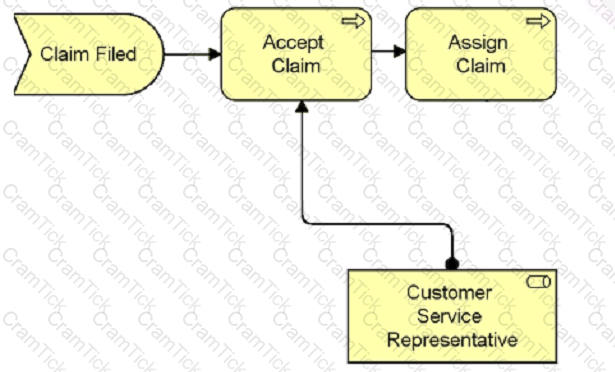
Which of the following correctly describes this diagram?
Complete the sentence. According to the top-level hierarchical structure of the ArchiMate Language, a model is considered to be __.
A Risk Assessment service provided by a Risk Measurement application enables actuaries to assess and mitigate financial risks as part of the Enterprise Risk Management process
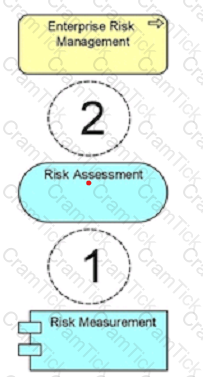
Which combination of relationships, when added to this diagram, would best represent this situation?
Consider the following entities:
A business partner
A software application for software sales
Server hardware used to host business applications
What ArchiMate aspect describes these entities?
What aspect in the ArchiMate Core Framework represents elements such as business roles, and system software?
Consider the diagram which shows part of theArchiSurance Claims Administration:
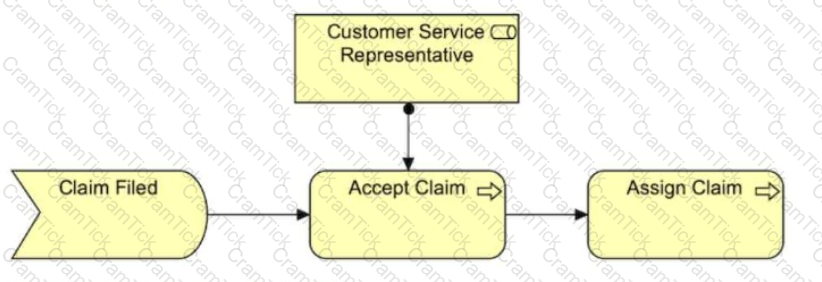
(A diagram showing:
"Claim Filed" (Business Event) → "Accept Claim" (Business Process) → "Assign Claim" (Business Process)
ACustomer Service Representativeis assigned toAccept Claim.)
Which of the following describes this diagram?